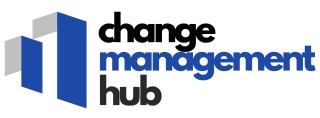-large-teaser.webp)
What is an Affinity Diagram?
Decoding Affinity Diagrams
Understanding the function and utility of an affinity diagram in project management is essential for both seasoned professionals and those new to the field. These diagrams serve as a critical tool in the process of gathering and organizing a multitude of ideas and data. This can be particularly beneficial in a business context where brainstorming sessions are crucial. At its core, an affinity diagram is a tool designed to facilitate the grouping of ideas into categories. These categories, often referred to as themes, emerge through brainstorming sessions and are developed by the project team. This method is a staple in many project management approaches, including PMP certifications, scrum, and Six Sigma methodologies. The affinity diagram process starts with a broad collection of raw data, such as sticky notes from a team meeting, which are then systematically categorized into different groups based on their natural relationships. It's important to highlight that this method isn't only about organizing information; it's about harnessing the creative potential of the team. This approach can significantly aid in the decision-making process. Implementing affinity diagrams can offer a structured guide for project managers and can serve as a vital part of the pmp certification exam preparation, offering practical insights into efficient project handling. For more on how this integrates with other change management tools, explore this comprehensive guide on cause and effect matrix functionality in change management.The Importance of Affinity Diagrams in Change Management
Significance in Navigating Change
Affinity diagrams have become an integral part of effective change management in project settings. Their role is particularly valuable as they help project managers organize complex data and foster a collective understanding among team members. The affinity diagram process encourages collaboration, turning brainstorming sessions into structured ideas that can drive project management forward. In the realm of change management, these diagrams help to align diverse perspectives within a team. They serve as a visual tool to categorize and group the input of all team members during project planning. This collaborative effort is vital in a project environment defined by constant changes, allowing project managers, including those with PMP certification, to respond to shifts more nimbly. Implementing affinity diagrams can aid Project Management Professionals (PMPs) in not only passing the PMP exam but also mastering complex tools and methodologies. The method facilitates effective business analysis, providing insights into decision-making processes crucial for teams operating under various frameworks, including Scrum. Moreover, affinity diagrams support the Lean Six Sigma approach by simplifying complex problem-solving. By visually displaying connections between disparate ideas, data can be organized and prioritized effectively. This aids in comprehensive pmp planning and ensures that the scrum master's responsibilities align with the overall business objectives. For those preparing for PMP exams or engaged in PMP certification training, understanding this diagram is invaluable. It is a skill covered in many certification study guides and a tool that substantiates a project manager’s competence in managing change within dynamic environments. For further insights into the role of affinity diagrams in advancing change management strategies, consider exploring the ADKAR model for effective change management, which complements the use of these diagrams.Steps to Create an Affinity Diagram in PMP
Steps to Crafting Your Affinity Diagram in PMP
Creating an affinity diagram is a structured process that can streamline how team members brainstorm and organize ideas effectively. This technique is particularly valuable in project management, promoting clarity and consensus. Here’s a guide to help you build an affinity diagram from scratch:- Gather Your Data and Ideas:
- Assemble Your Team:
- Post the Ideas:
- Identify Groupings:
- Create Categories:
- Refine and Review:
- Plan Your Next Steps:
Benefits of Using Affinity Diagrams in Project Management
Reasons to Utilize Affinity Diagrams in Business Analysis
Incorporating affinity diagrams into your project management toolkit offers several benefits that can streamline processes and enhance decision making. As a project manager, embracing these diagrams can facilitate a more efficient data analysis process, particularly during brainstorming sessions and strategic planning.- Improved Collaboration: Affinity diagrams serve as a visual tool that engages team members, encouraging participation from everyone. This enhances collaboration and ensures that diverse ideas are captured and considered, transforming sticky notes during brainstorming sessions into actionable insights.
- Structured Organization of Ideas: For PMP certification holders or those on the path to certification, these diagrams help in organizing large amounts of data into logical groups. This organization aids in the categorization of complex information, making it easier for the project management team to identify patterns and relationships.
- Enhanced Problem Solving: During Sigma brainstorming sessions, affinity diagrams provide an effective structure that guides problem-solving endeavors. By clustering ideas logically, team members can focus on identifying the root causes of issues and devising appropriate solutions.
- Efficient Decision Making: When faced with critical decisions in a business environment, an affinity diagram can guide project managers through a more systematic decision-making process. By visualizing the relationships between ideas, teams are better equipped to make informed decisions that align with strategic objectives.
- Versatility and Applicability: Whether you are preparing for the PMP exam or working through a Scrum project as a Scrum Master, the versatility of affinity diagrams makes them applicable across various sectors and project phases. This adaptability is invaluable in guiding successful project outcomes.
Challenges and Solutions in Implementing Affinity Diagrams
Overcoming Obstacles with Smart Strategy
Implementing affinity diagrams within project management frameworks such as PMP or Scrum often presents challenges that teams need to navigate skillfully. Understanding these potential hurdles and employing strategic solutions can transform these diagrams from a simple brainstorming tool to a pivotal element in decision making and problem solving.
Navigating Team Dynamics
One common challenge is aligning diverse team members during brainstorming sessions. Unmanaged dynamics can turn a productive affinity diagram session into chaos. Engage a facilitator to guide the process, ensuring focus and inclusivity. This person can steer discussions, encouraging quieter participants and reining in dominant voices.
Integrating Affinity Diagrams with Existing Processes
Another roadblock is integrating diagrams with existing business processes like data analysis or decision making frameworks. Teams may struggle to connect insights from affinity diagrams with broader sigma or project management goals. To address this, create a clear workflow that outlines how ideas generated through diagrams will feed into other processes. This guide or roadmap assists teams in visualizing these connections.
Balancing Quantity with Quality
Teams often grapple with the sheer volume of data and ideas generated during affinity diagram activities. Not every piece of information is substantial, leading to potential for overwhelming the process. Therefore, prioritize quality over quantity by setting criteria for evaluating and categorizing ideas. Regular intervals of reflection and discussion around these criteria can keep the process focused and productive.
Embracing Digital Tools
In today’s tech-driven environment, relying solely on traditional sticky notes might limit efficiency. Transitioning to digital tools can enhance the diagram affinity process. These tools offer features that streamline sorting and categorizing, fostering collaboration even in remote settings. Consider investing in software options that align with your team’s existing technology stack.
Continuous Learning for Mastery
Finally, possessing a robust understanding of affinity diagrams and their role in project management enhances their implementation. Encourage team members to pursue certification training like PMP certification or a Scrum master exam, as these often include modules on effective use of tools like affinity diagrams. Learning platforms and study guides can help team members master using these diagrams effectively within project settings.
By addressing common challenges head-on, project managers and teams can harness the full potential of affinity diagrams, making them a cornerstone of successful project management strategies.













